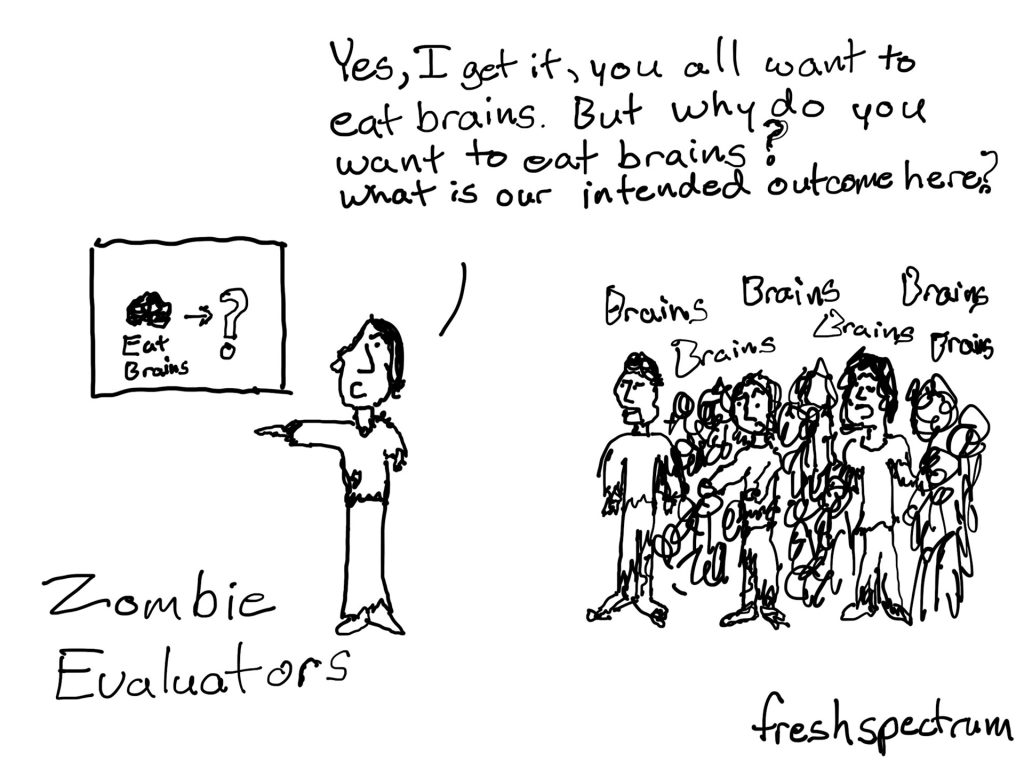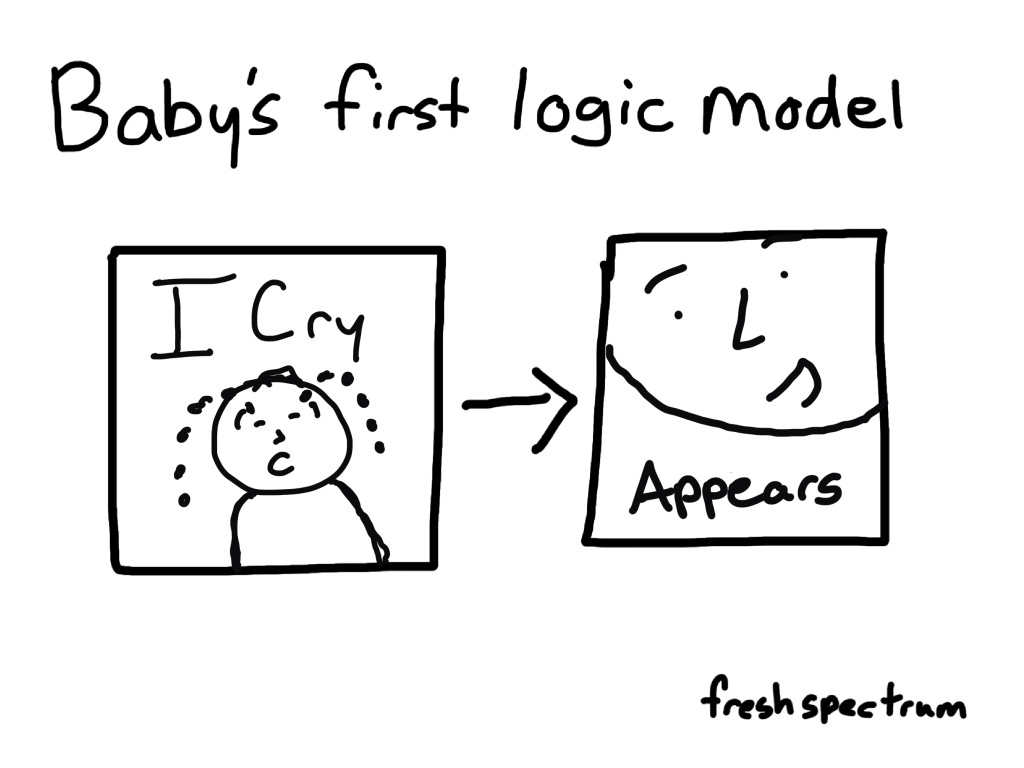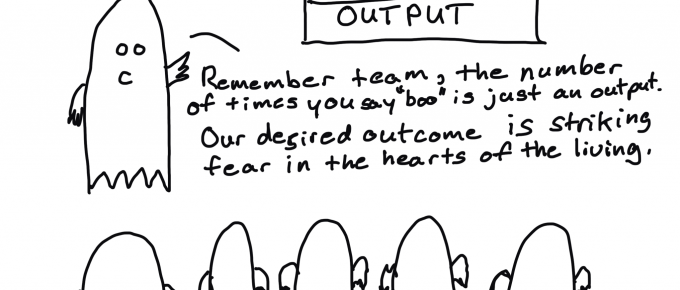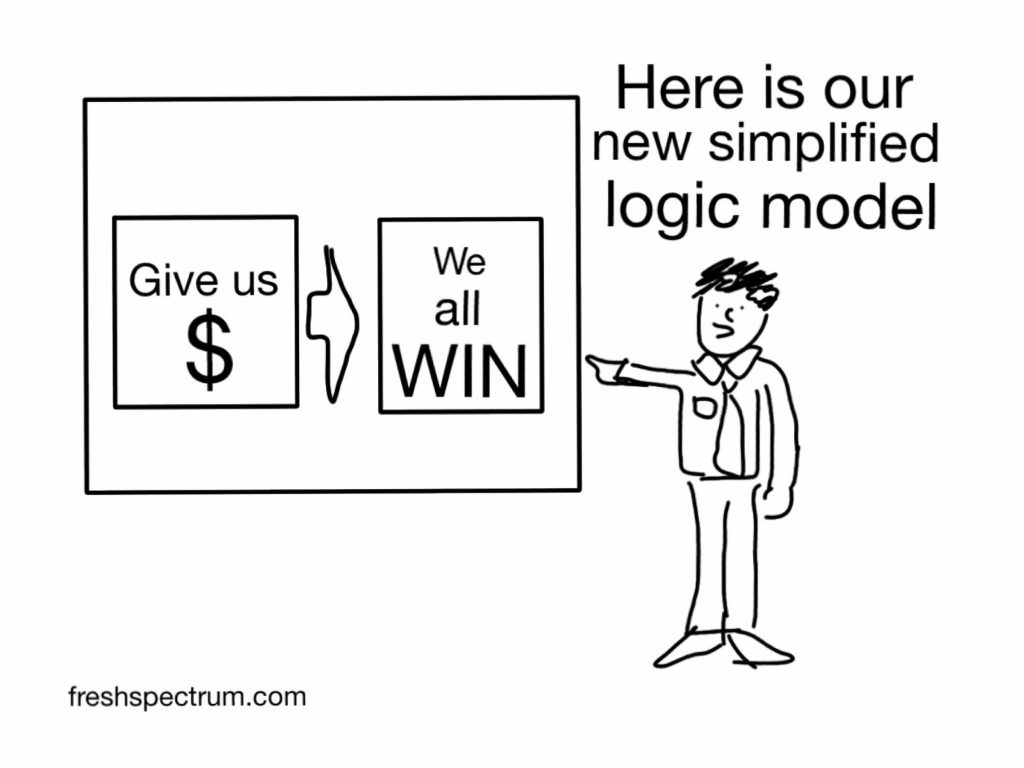Summary: A logic model is an attempt to show how your program is supposed to work.

Have you ever gone for a walk or a drive without a particular destination in mind?
I think it’s one of my favorite things. Because there is absolutely no way to get lost. When you wander the only time you can get lost is when you try to find your way home.
On the other hand if you’re trying to solve some kind of big social problem, it’s probably not the time to wander. You should have a little direction to go with your purpose.
Logic models are tools that lots of evaluators use to visually show how a program is supposed to work. If we take this action, we should see this result.
A basic logic model just looks like a simple flow chart.

Reverse engineering a program’s logic.
You might think that most logic models get drawn when a program is being designed. It sure looks like a plan of action. But I don’t think that’s actually true, at least not always, and probably not even most of the time.
Many programs get their start because a person or group is trying to solve a problem. Somebody’s hungry, they give them food. A family gets evicted, they find them somewhere to stay. They don’t always have some grand plan for how their actions are going to lead to desired results at a large scale.
If you’re an evaluator being tasked with the job of judging how a program works, you really need to start by asking a very basic question, “how is this program supposed to work?”
And that’s what a logic model does, it gives us a picture of how. It’s a tool we can build by reverse engineering a program’s logic, usually through collaboration with the program staff.

The basic elements of a logic model.
There are all different types of logic models, but they usually share some similar components.
Inputs > Activities > Outputs > Outcomes
Inputs: What goes in (money, people power, time, etc).
Activities: The stuff you do (actions)
Outputs: Counting the stuff we did or people we served.
Outcomes: The consequences of our actions.
If there is anything that people get hung up on it’s probably knowing the difference between an output and an outcome.
Let’s say you’re teaching an after school program. Ten kids show up each night. That would be an output. Did they actually learn anything, or retain more of what they learned earlier in the day? That would be an outcome.

Let’s practice with something silly
You can create a logic model out of all sorts of things you do on a daily basis. So practice creating one with low stakes.
I have a very food motivated dog named Jaina. If anyone visits the pantry to grab a snack, she hears it and comes running. Her hope is that the person with the snack might be willing to share with her.
Input: Snack food in pantry (if no snack food, nobody gets snacks).
Activity: After hearing a cracker box opening, join the family member at the pantry door. Give them your most pathetic puppy dog look.
Output: Followed two family members today to the pantry.
Outcome: One of the two family members tossed a delicious cracker that was thoroughly enjoyed.
Learners, what questions do you have? Evaluators, what am I missing?
These guides are meant to be conversational and easy to read. But that means I leave out a bunch of potentially useful stuff. If you have any lingering questions, or suggestions as to what should be added to this guide, please leave a comment.







